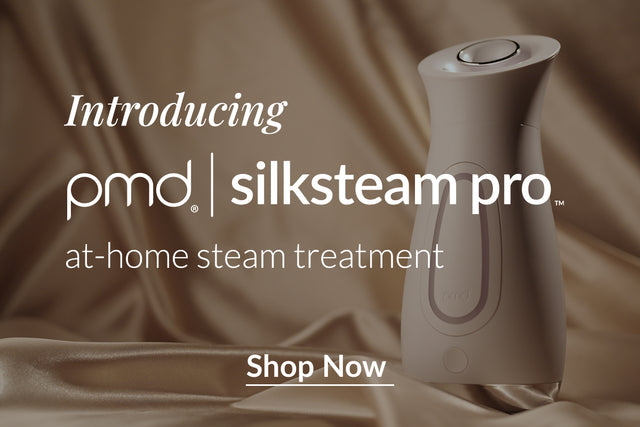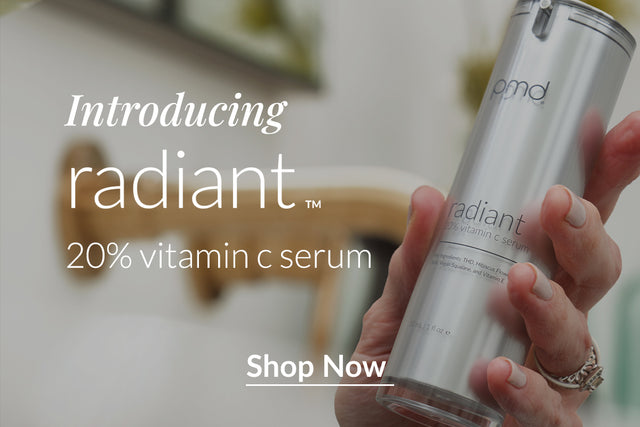Makensey Sainsbury | Master Esthetician
Picture this:
You’ve just purchased a new serum or a new cleanser. You took your time to read the key ingredients and understand the benefits. Now you indulge in your new routine, adding this special potion to the mix in hopes of waking up to real results…only to find that this new addition has given you a pimple (or more!).It’s frustrating, we know! The reality is, that probably was not hard to “picture”. You may have even thought back on a specific formula you tried and this exact scenario played out! While frustrating, there is a silver lining to these events.
It’s important to understand the nuances of the skin when adding new products to your routine. When introducing new skincare, especially those with new ingredients or active ingredients such as AHAs, BHAs or retinols, it is very common to experience the exact scenario previously described. In most cases, this is not a “breakout” caused by the formula. It’s not even an allergy or irritation. This is a process called “purging” and while, yes, it is annoying, It is also crucial to getting the skin of your dreams. But what is purging skin? What are the skin purging symptoms and how do you know the difference?
Purging:
Purging of the skin is caused by the new active ingredients being introduced to the skin and speeding up the cell turnover or exfoliation process of the skin. This purging can look like a simple, single harmless pimple or, it can be a series or chain of pimples. The good thing is, it’s usually short-lived if taken care of properly.
Think of the skin this way: on the surface, before starting a new product, the skin looks clear and fresh for the most part but underneath the surface you have the systems and functions of the skin hard at work. The sebaceous glands are trying to produce oil to help keep your skin moisturized. The fibroblasts are making collagen and elastin to hold the skin structure. The blood flow is carrying oxygen throughout the skin and so many other functions that are vital to the skin health are doing their job. It is an intricate network and within that network there are little imperfections. These imperfections can be anything from clogged pores and underlying impurities, hormonal imbalances or even too much (or too little) oil production. But! They are below the surface and you don’t see them…until they reach the surface *que the dramatic music*.
Purging vs. Breakouts
So now you have tried the skincare product and believe it caused a breakout and you’re thinking “maybe this isn’t for me”. The truth is, this new product has helped your skin bring this imperfection to the surface because of the accelerated cell turnover process.I want this to encourage you! When purging occurs and the blemish is brought to the surface, the bright side is that it is easy to treat. Much easier than when it is hiding underneath the skin’s surface. What does purging look like? It can look really similar to a breakout so pay close attention. Acne purging can happen in areas where you normally have breakouts because that’s where those underlying imperfections are hiding but it can also happen in new areas, due to the introduction of the new ingredients to that part of the skin.
On the other hand a breakout is more often caused by an irritation or allergic reaction from something external (new makeup, new medication, changes in diet, heavy products that don’t allow the skin to breath, etc.).
The difference is that purging is the skin’s way of adjusting to the new and beneficial ingredients and breakouts require a discontinuation of those ingredients all together.
So how long do purges last? Purging of the skin will commonly last 7-10 days (if it’s lasting longer, keep reading because we know how to fix that). Breakouts will persist or continue for much longer than most purging, sometimes even weeks.
Now What? How do we fix this?
Don’t throw out the new product just yet! I told you we can fix this.The first step to handling the situation is to treat the blemish with some kind of spot treatment. Popular ones will usually contain salicylic acid or benzoyl peroxide. This is just to be applied to the affected area. Next, I always recommend that you make sure you are using the new product correctly. It seems simple enough but even I have admittedly been too excited to try something out and realized I misread the instructions. Be sure you have all the information you need to determine when to use the product, how often and how much to use. More is not always better.
Along that same note, If the purging just keeps happening and you find it is lasting longer than expected, try cutting back slightly. All skin is different, some people may need to use active ingredients only once or twice a week as opposed to others who use them daily.
My last, and probably favorite trick to help with purging, is to only add one new product at a time. When we get excited about a new skincare line or maybe we are browsing the shelves and find 2 or 3 products we are excited to bring home, it’s tempting to go home and incorporate them all at once. Sometimes this works but most often you could have a purging effect and with an assortment of new products being used all at once, it’s very difficult to know what item caused this effect.
Now that you know what purging means to the skin, the bottom line is to have hope. Despite the initial inconvenience, purging does offer some essential benefits to the skin by drawing out impurities and imperfections that would have otherwise been trapped under the skin. Left untreated and hiding below the surface the effects could be much worse and much harder to treat. Now that you know why purging happens and how to minimize the inconvenience, I hope you are more confident than ever to find the best additions to your skincare routine.


























